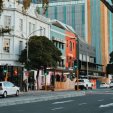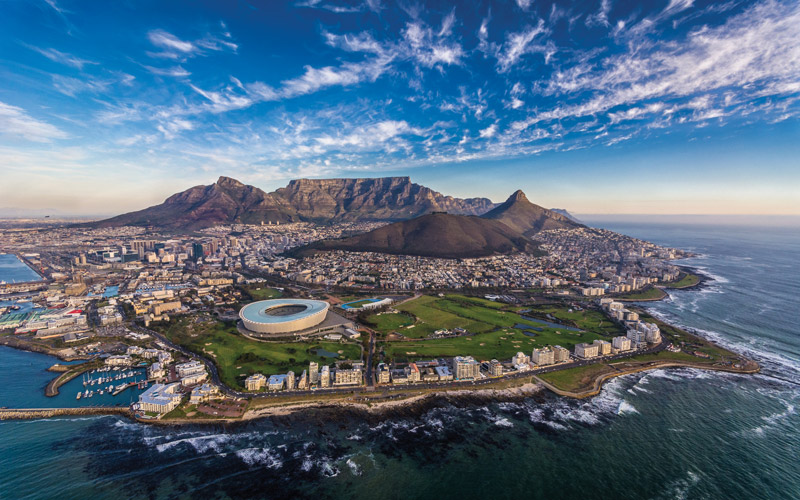Tickets for kids from R10! And you can bring your own food
Cape Town as World Design Capital 2014
An inside look at what’s in store for the Mother City in 2014
In October 2011, after a lengthy and competitive bidding process, Cape Town was awarded the status of World Design Capital 2014, an esteemed designation that acknowledges cities that use design as a tool for further development. While, with our brimming pool of creative resources, it’s quite clear why the Mother City makes a great candidate, what is less apparent is how this title will play out in reality. Though the winning of the bid levied much hype at the time, very little has been heard since, and, with less than a year to go until the global spotlight shines on our seaside metropolis, most Cape Town dwellers are still very much in the dark about what’s to come.
No doubt, the designation will work to broaden our definition of design, enhance an appreciation for the discipline and help us all to start looking at our city and its challenges through a creative lens, but the question remains: What exactly can we expect to see happening when the famed year rolls round? To help quell confusion and to shed some more light on the situation, we picked the brain of Richard Perez, programme director for World Design Capital for the City of Cape Town and a veritable authority on the topic. Here’s what the expert had to say:
Can you tell us more about the World Design Capital concept?
World Design Capital (WDC) is an initiative developed by the International Council of Societies of Industrial Design aimed at showcasing how a city can embrace design for social and economic growth. Previous candidates, Torino, Seoul and Helsinki, were all developed cities, so the focus during their tenure was on parading their history of design, but as a developing country, Cape Town is unique: we’ll be emphasising how we can use design for transformation going forward.
Why is it such an honour to be designated this title?
It’s recognition that Cape Town is a creative hub of sorts, and that immediately puts us on the global design map. The benefit now is that we can use this platform to promote our design industry and really exemplify our ability to innovate to the world.
We’ve heard little about specific plans for next year. What can we expect to see happening in 2014?
A big part of WDC is creating more awareness of the value of design and design thinking, so the year will be about achieving this through events, conferences, workshops and showcases of objects and processes. There’ll be a full, curated programme that’s pinned together by seven signature events, which are very much global happenings. For example, one is a New Year’s Eve Celebration of Design to get people curious and involved. Another is a Design Week Forum, which is like a week-long festival during which design studios open themselves up to the public, and everyone does little exhibitions. Aside from these, anybody – designers, institutions, anyone – can get involved by coming up with their own ideas, submitting proposals and participating in the programme.
Who will be responsible for coordinating the programme?
We’ve set up an independent organisation called Cape Town Design, and the new CEO is Alayne Reesberg. They’ll be the public face of WDC and the project management team behind all the initiatives.
What can your average Mother City citizen, a person who knows little about design, look forward to?
I suppose you could say it’s going to be like one big design festival for a whole year. There’ll be lots happening in public and design spaces, lots of international people coming, lots of networking and pop-ups and experiments. There’ll be an energy, a vibe in the city, where everybody is just celebrating design and expressing themselves. It’s an opportunity to think differently and be slightly disruptive.
And what about design fundis? What will there be for them?
There’ll be workshops, talks and seminars where they can learn more and network, like the International Design Policy Conference, another anchor event that will bring in top thinkers and academics from around the world to talk about design and where it’s moving as a profession. But this is also the creative community’s opportunity to climb up on this platform and make it work for themselves, to use WDC as a leverage for growth.
Helsinki, WDC2012, also hosted a range of unique events like trade shows, movie nights, car exhibitions and walking tours and erected a number of special structures. Can we expect something similar?
Yes, I believe you can. We don’t necessarily want to follow the Helsinki model exactly – it needs to be embedded in Cape Town – but I can see those sorts of things being part of the programme. Until proposals come in, it’s all a bit unclear, but the focus will be on anything that can educate people about what design is.
Can you tell us more about the WDC2014 theme, Live Design Transform Life?
The theme talks about using design as a tool to change things, particularly our social system and people’s lives. This can range from small, soft issues, like painting a wall yellow to make someone smile, to big, hard issues, like creating parks and sporting facilities in Khayelitsha or designing a new freeway to transport commuters into town. Essentially, it’s about acknowledging that design can transform things, so projects will be centred on this.
So, the WDC title will really go towards helping us build a better, more liveable city?
Absolutely, it’s about getting us to start thinking and doing things differently. We won’t see massive transformation in just one year, but 2014 is a catalyst, it’s about gaining momentum so that we’ll start seeing real change after this, from 2015 on. Things certainly won’t come to a stop at the end of the year – it’s the legacy element of 2014 that is the most important.
We assume there’ll be lots of people who want to get involved in this inspiring, exciting project? How can they go about doing this?
At the end of February 2013, Cape Town Design will do an open call for proposals that invites people to come with their own ideas, and funding, to be included in the programme. There’ll then be a second call later in the year, so people will have two opportunities to pitch their initiatives. Aside from this, there’ll also be an open-source logo that anyone can download and put on T-shirts, products, websites and so on to show that they support WDC and are part of it too. The official website [wdccapetown2014.com] will be the primary interface with the public – the events programme and information about how to submit ideas will go up there. And there’ll be a physical presence too; we certainly want to make WDC accessible to everybody.
---
Eager to find out more about the Mother City’s strong creative community? Have a look at our overview of local designers and design shops in Cape Town.
---
Also, don’t forget to follow us on Twitter, like us on Facebook, join our Google+ circle and check out our Pinterest boards for updates. Not to mention, subscribe to our newsletter to keep up to date with what's hip and happening in our pretty city.








